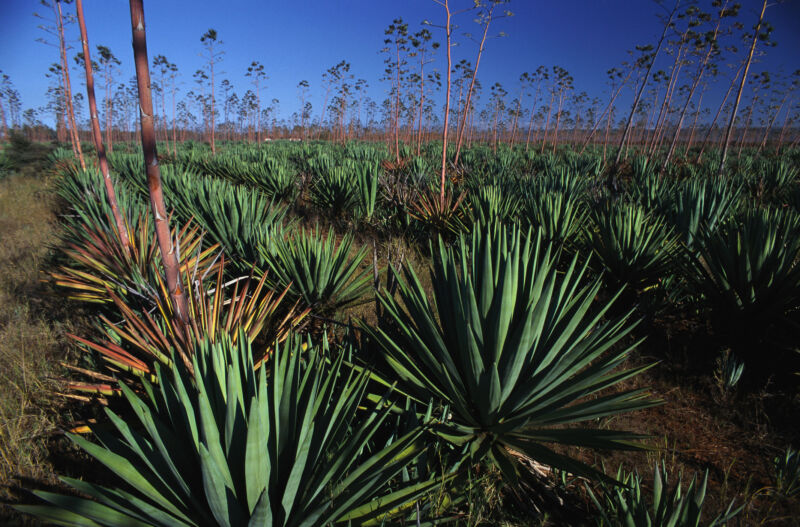Absorbant agave —
A Kenyan tinkerer and Stanford engineer team up to make maxi pads from agave fibers.

Enlarge / Sisal is an invasive species that is also grown agriculturally.
Women and girls across much of the developing world lack access to menstrual products. This means that for at least a week or so every month, many girls don’t go to school, so they fall behind educationally and often never catch up economically.
Many conventional menstrual products have traditionally been made of hydrogels made from toxic petrochemicals, so there has been a push to make them out of biomaterials. But this usually means cellulose from wood, which is in high demand for other purposes and isn’t readily available in many parts of the globe. So Alex Odundo found a way to solve both of these problems: making maxi pads out of sisal, a drought-tolerant agave plant that grows readily in semi-arid climates like his native Kenya.
Putting an invasive species to work
Sisal is an invasive plant in rural Kenya, where it is often planted as livestock fencing and feedstock. It doesn’t require fertilizer, and its leaves can be harvested all year long over a five- to seven-year span. Odundo and his partners in Manu Prakash’s lab at Stanford University developed a process to generate soft, absorbent material from the sisal leaves. It relies on treatment with dilute peroxyformic acid (1 percent) to increase its porosity, followed by washing in sodium hydroxide (4 percent) and then spinning in a tabletop blender to enhance porosity and make it softer.
They tested their fibers with a mixture of water mixed with glycerol—to make it thicker, like blood—and found that it is as absorbent as the cotton used in commercially available maxi pads. It was also as absorbent as wood pulp and more absorbent than fibers prepared from other biomaterials, including hemp and flax. Moreover, their process is less energy-intensive than conventional processing procedures, which are typically performed at higher temperatures and pressures.
In a cradle-to-gate carbon footprint life cycle analysis, including sisal cultivation, harvesting, manufacturing, and transportation, sisal cellulose microfiber production fared roughly the same as production of cellulose microfiber from wood and much better than that from cotton in terms of both carbon footprint and water consumption, possibly because cotton requires so much upstream fertilizer. Much of the footprint comes from transportation, highlighting how useful it can be to make products like this in the same communities that need them.
Science for the greater good
This is not Odundo’s first foray into utilizing sisal; at Olex Techno Enterprises in Kisumu, Kenya, he has been making machines to turn sisal leaves into rope for over 10 years. This benefits local farmers since sisal rope and even sisal fibers sell for ten times as much as sisal leaves. In addition to making maxi pads, Odundo also built a stove that burns sawdust, rice husks, and other biodegradable waste products.
By reducing wood stoves, he is reducing deforestation and improving the health of the women who breathe in the smoke of the cookfires. Adoption of such stoves have been a goal of environmentalists for years, and although a number of prototypes have been developed by mostly male engineers in developed countries, they have not been widely used because they are not that practical or appealing to the mostly female cooks in developing countries—the people who actually need to cook with them, yet were not consulted in their design.
Manu Prakash’s lab’s website proclaims that “we are dedicated toward inventing and distributing ‘frugal science’ tools to democratize access to science.” Partnering with Alex Odundo to manufacture menstrual products in the low-income rural communities that most need them seems like the apotheosis of that goal.
Communications Engineering, 2023. DOI: 10.1038/s44172-023-00130-y